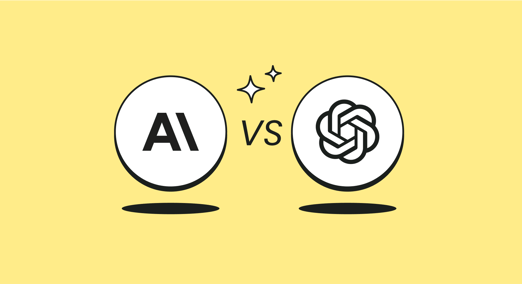Anthropic New Billing APIs Vs OpenAI Billing API – What FinOps Teams Need to Know

Until recently, tracking AI usage costs was like trying to do FinOps blindfolded. You could see the bill at the end of the month, but you had no way to drill down into which team, model, or workload was driving spend.
OpenAI changed that by exposing a Usage API and Cost API, and this week Anthropic followed suit with a brand new Usage & Cost Admin API. For FinOps practitioners, this is big news. Let’s break it down.
OpenAI’s Head Start
OpenAI’s APIs are already fairly mature. With an Admin key, you can fetch:
- Granular usage metrics: input vs. output tokens, cached tokens, number of requests
- Filters and grouping: by project, model, API key, even daily vs. hourly buckets
- Cost data: daily spend, cleanly mapped into unblended cost
It’s straightforward, stable, and already battle-tested by enterprises. Many teams use it today to run daily jobs that pull spend and token usage directly into their cost dashboards.
Anthropic Joins the Game
Anthropic’s new Admin API is fresh out of the oven – but surprisingly robust:
- Usage breakdowns: uncached vs. cached tokens, prompt cache hit rates, number of messages
- Rich dimensions: group by model, API key, workspace, and service tier (Standard, Batch, Priority)
- Cost reporting: daily cost in USD, with line items for features like web search or code execution
- Fresh data: updated within ~5 minutes of usage, designed for frequent polling
One nuance: Priority Tier usage doesn’t show up in cost reports – you’ll only see it via the usage endpoint. That’s something FinOps teams will need to stitch together themselves.
Similar Goals, Different Maturity
Both APIs now let you track token consumption, daily costs, and attribute spend across teams or projects. The differences?
- OpenAI still feels more polished – broader coverage, more examples in the wild, and simpler cost modeling (no special tiers).
- Anthropic’s API is newer but more ambitious in some ways – especially with visibility into service tiers and caching efficiency.
The important part: the direction is clear. Every serious AI provider will need to expose billing APIs if they want enterprise adoption at scale.
Why It Matters for FinOps
As AI adoption grows, so do the bills. These APIs finally let FinOps teams treat AI services like any other cloud resource:
- Cost allocation: Attribute Claude or GPT-4 spend to the right team or product line.
- Anomaly detection: Spot unexpected surges in token usage before they wreck your budget.
- Optimization: Compare model mix, caching rates, and even cost per request to guide smarter engineering choices.
FinOps is about accountability and optimization. Without programmatic access to usage and cost, you’re flying blind. With it, you’re back in control.
Final Thought
OpenAI set the pace. Anthropic is catching up fast. And the FinOps community wins either way.
If your teams are building with GPT or Claude, now is the time to bring their usage into the same FinOps workflows you already use for AWS or Kubernetes. Because AI costs aren’t “special” anymore – they’re just another line item in your infrastructure bill, and they deserve the same level of visibility and discipline.







